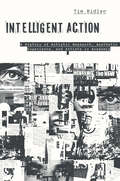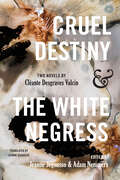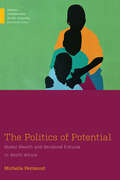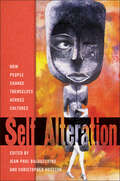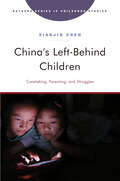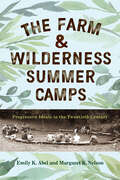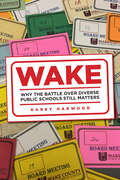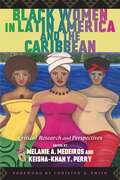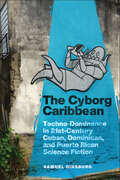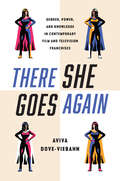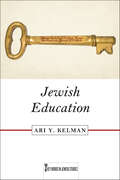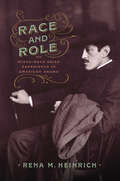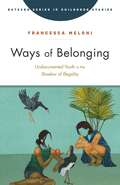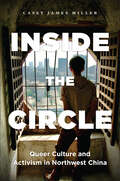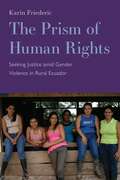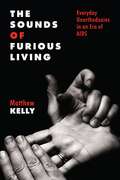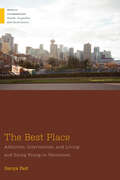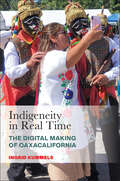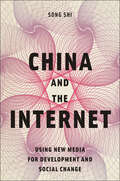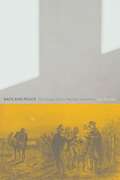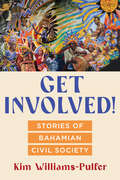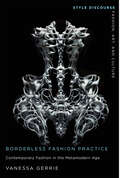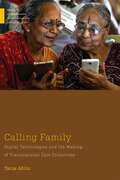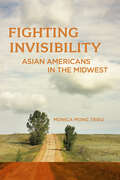- Table View
- List View
Intelligent Action: A History of Artistic Research, Aesthetic Experience, and Artists in Academia
by Timothy RidlenThrough archival research and analysis of artworks by Gyorgy Kepes, Allan Kaprow, Mel Bochner, and Suzanne Lacy, among others, Intelligent Action examines how these artists brought alternatives to dominant conceptions of research and knowledge production. The book is organized around specific institutional formations—artistic research centers, proposals, exhibitions on college campuses, and the establishment of new schools or pedagogic programs. Formal and social analysis demonstrate how artists responded to ideas of research, knowledge production, information, and pedagogy. Works discussed were produced between 1958 and 1975, a moment when boundaries between media were breaking down in response to technological, cultural, and generational change. In the context of academia, these artistic practices have taken up the look, feel, or language of various research and teaching practices. In some cases, artists bent to the demands of the cold war research university, while in others, artists developed new modes of practice and pedagogy. Reading these works through their institutional histories, author Tim Ridlem shows how artistic research practices and artistic subjectivity developed in the long 1960s within and alongside academia, transforming the role of artists in the process.
Cruel Destiny and The White Negress: Two Novels by Cléante Desgraves Valcin
by Cléante D. ValcinCléante Desgraves Valcin (1891-1956) was a poet, writer, and feminist—most prominently Haiti’s first published female novelist, who employed her sentimental fiction to explore matters of race, gender, nationalism, and sovereignty. A contemporary of Harlem Renaissance writers such as Nella Larsen and Zora Neale Hurston, Valcin emerged as an influential writer and political figure among the Black Atlantic diaspora. Now, for the first time, her two acclaimed novels are available in English translation. Cruel Destiny (1929) tells the tragic love story of Armand and Adeline, drawn together by a magnetic attraction, yet kept apart by a dark family secret. Depicting the heavy expectations placed upon women in Haiti’s elite society, it also explores the troubled and twisted relationships between the Haitians and their former colonial masters, the French. In The White Negress (1934), a Frenchwoman moves to Haiti and is torn between two very different men, a Black Haitian lawyer, and a white American carpetbagger. Putting a fresh spin on the tired tragic mulatta trope, Valcin reveals the racial prejudices, class tensions, and anti-colonial resentments of an island under American occupation. Together, these two novels expand our understanding of Caribbean literature, as well as the political struggles and artistic triumphs of Black women in the Americas.
The Politics of Potential: Global Health and Gendered Futures in South Africa (Medical Anthropology)
by Michelle PentecostThe first one thousand days of human life, or the period between conception and age two, is one of the most pivotal periods of human development. Optimizing nutrition during this time not only prevents childhood malnutrition but also determines future health and potential. The Politics of Potential examines early life interventions in the first one thousand days of life in South Africa, drawing on fieldwork from international conferences, government offices, health-care facilities, and the everyday lives of fifteen women and their families in Cape Town. Michelle Pentecost explores various aspects of a politics of potential, a term that underlines the first one thousand days concept and its effects on clinical care and the lives of childbearing women in South Africa. Why was the First One Thousand Days project so readily adopted by South Africa and many other countries? Pentecost not only explores this question but also discusses the science of intergenerational transmissions of health, disease, and human capital and how this constitutes new forms of intergenerational responsibility. The women who are the target of first one thousdand days interventions are cast as both vulnerable and responsible for the health of future generations, such that, despite its history, intergenerational responsibility in South Africa remains entrenched in powerfully gendered and racialized ways.
Self-Alteration: How People Change Themselves across Cultures
by Max Harwood Gil Hizi Michael Jackson Muhammad Kavesh Gisella Orsini Nigel Rapport Kathryn Rountree Banu Senay Jaap TimmerMany of us feel a pressing desire to be different—to be other than who we are. Self-conscious, we anxiously perceive our shortcomings or insufficiencies, wondering why we are how we are and whether we might be different. Often, we wish to alter ourselves, to change our relationships, and to transform the person we are in those relationships. Not only a philosophical question about how other people change, self-alteration is also a practical care—can I change, and how? Self-Alteration: How People Change Themselves across Cultures explores and analyzes these apparently universal hopes and their related existential dilemmas. The essays here come at the subject of the self and its becoming through case studies of modes of transformation of the self. They do this with social processes and projects that reveal how the self acquires a non-trivial new meaning in and through its very process of alteration. By focusing on ways we are allowed to change ourselves, including through religious and spiritual traditions and innovations, embodied participation in therapeutic programs like psychoanalysis and gendered care services, and political activism or relationships with animals, the authors in this volume create a model for cross-cultural or global analysis of social-self change that leads to fresh ways of addressing the 'self' itself.
China's Left-Behind Children: Caretaking, Parenting, and Struggles (Rutgers Series in Childhood Studies)
by Xiaojin ChenOne unintended consequence of the unprecedented rural-to-urban migration in China over the past three decades is the exponentially increased number of "left-behind" children—children whose parents migrated to more developed areas and who live with one parent or other extended family members. The daily lives of these children, including their caretaking arrangements, parent-child bonding and communication, and schooling, are fraught with distractions and uncertainties. Paying special attention to this marginalized group, this book investigates the role of parental migration and the left-behind status in shaping Chinese family dynamics and children’s general wellbeing, including their school performance, delinquency, resilience, feelings of ambiguous loss, and other psychological problems. Blending theory, empirical research, and real-world interviews with left-behind children, China's Left-Behind Children provides a uniquely close look at these children's lives while also providing the larger national context that defines and shapes their everyday lives.
The Farm & Wilderness Summer Camps: Progressive Ideals in the Twentieth Century
by Emily K. Abel Margaret K. NelsonAlthough summer camps profoundly impact children, they have received little attention from scholars. The well-known Farm & Wilderness (F&W) camps, founded in 1939 by Ken and Susan Webb, resembled most other private camps of the same period in many ways, but F&W also had some distinctive features. Campers and staff took pride in the special ruggedness of the surrounding environment, and delighted in the exceptional rigor of the camping trips and the work projects. Importantly, the Farm & Wilderness camps were some of the first private camps to become racially integrated.The Farm & Wilderness Summer Camps: Progressive Ideals in the Twentieth Century traces these camps, both unique and emblematic of American youth culture of the twentieth century, from their establishment in the late 1930s to the end of the twentieth century. Emily K. Abel and Margaret K. Nelson explore how ideals considered progressive in the 1940s and 1950s had to be reconfigured by the camps to respond to shifts in culture and society as well as to new understandings of race and ethnicity, social class, gender, and sexual identity. To illustrate this change, the authors draw on over forty interviews with former campers, archival materials, and their own memories. This book tells a story of progressive ideals, crises of leadership, childhood challenges, and social adaptation in the quintessential American summer camp.
Wake: Why the Battle over Diverse Public Schools Still Matters (Critical Issues in American Education)
by Karey Alison HarwoodThe Wake County Public School System was once described as a beacon of hope for American school districts. It was both academically successful and successfully integrated. It accomplished these goals through the hard work of teachers and administrators, and through a student assignment policy that made sure no school in the countywide district became a high poverty school. Although most students attended their closest school, the “diversity policy” modified where some students were assigned to make sure no school had more than 40% of its students qualifying for free or reduced-price lunch or more than 25% performing below grade level. When the school board election of 2009 swept into office a majority who favored “neighborhood schools,” the diversity policy that had governed student assignment for years was eliminated. Wake: Why the Battle Over Diverse Public Schools Still Matters tells the story of the aftermath of that election, including the fierce public debate that ensued during school board meetings and in the pages of the local newspaper, and the groundswell of community support that voted in a pro-diversity school board in 2011. What was at stake in those years was the fundamental direction of the largest school district in North Carolina and the 14th largest in the U.S. Would it maintain a commitment to diverse schools, and if so, how would it balance that commitment with various competing interests and demands? Through hundreds of published opinion articles and several in depth interviews with community leaders, Wake examines the substance of that debate and explores the community’s vision for public education. Wake also explores the importance of knowing the history of a place, including the history of school segregation. Wake County’s example still resonates, and the battle over diverse public schools still matters, because owning responsibility for the problem of segregated schools (or not) will shape the direction of America’s future.
Black Women in Latin America and the Caribbean: Critical Research and Perspectives
by Julia S. Abdalla Angela Crumdy Bruna Cristina Pereira Ishan Gordon-Ugarte Castriela E. Hernández Reyes Eshe E. Lewis Cristiano Dos Rodrigues Edilza Correia Sotero Maziki Thame Melanie WhiteBlack Women in Latin America and the Caribbean: Critical Research and Perspectives employs an intersectional and interdisciplinary approach to examine Black cisgender women’s social, cultural, economic, and political experiences in Latin America and the Caribbean. It presents critical empirical research emphasizing Black women’s innovative, theoretical, and methodological approaches to activism and class-based gendered racism and Black politics. While there are a few single-authored books focused on Black women in Latin American and Caribbean, the vast majority of the scholarship on Black women in Latin America and the Caribbean has been published as theses, dissertations, articles, and book chapters. This volume situates these social and political analyses as interrelated and dialogic and contributes a transnational perspective to contemporary conversations surrounding the continued relevance of Black women as a category of social science inquiry. Many of the contributing authors are from Latin American and Caribbean countries, reflecting a commitment to representing the valuable observations and lived experiences of scholars from this region. When read together, the chapters offer a hemispheric framework for understanding the lasting legacies of colonialism, transatlantic slavery, plantation life, and persistent socio-economic and cultural violence.
The Cyborg Caribbean: Techno-Dominance in Twenty-First-Century Cuban, Dominican, and Puerto Rican Science Fiction (Critical Caribbean Studies)
by Samuel GinsburgThe Cyborg Caribbean examines a wide range of twenty-first-century Cuban, Dominican, and Puerto Rican science fiction texts, arguing that authors from Pedro Cabiya, Alexandra Pagan-Velez, and Vagabond Beaumont to Yasmin Silvia Portales, Erick Mota, and Yoss, Haris Durrani, and Rita Indiana Hernandez, among others, negotiate rhetorical legacies of historical techno-colonialism and techno-authoritarianism. The authors span the Hispanic Caribbean and their respective diasporas, reflecting how science fiction as a genre has the ability to manipulate political borders. As both a literary and historical study, the book traces four different technologies—electroconvulsive therapy, nuclear weapons, space exploration, and digital avatars—that have transformed understandings of corporality and humanity in the Caribbean. By recognizing the ways that increased technology may amplify the marginalization of bodies based on race, gender, sexuality, and other factors, the science fiction texts studied in this book challenge oppressive narratives that link technological and sociopolitical progress. .
There She Goes Again: Gender, Power, and Knowledge in Contemporary Film and Television Franchises
by Aviva Dove-ViebahnThere She Goes Again interrogates the representation of ostensibly powerful women in transmedia franchises, examining how presumed feminine traits—love, empathy, altruism, diplomacy—are alternately lauded and repudiated as possibilities for effecting long-lasting social change. By questioning how these franchises reimagine their protagonists over time, the book reflects on the role that gendered exceptionalism plays in social and political action, as well as what forms of knowledge and power are presumed distinctly feminine. The franchises explored in this book illustrate the ambivalent (post)feminist representation of women protagonists as uniquely gifted in ways both gendered and seemingly ungendered, and yet inherently bound to expressions of their femininity. At heart,There She Goes Again asks under what terms and in what contexts women protagonists are imagined, envisioned, embodied, and replicated in media. Especially now, in a period of gradually increasing representation, women protagonists demonstrate the importance of considering how we should define—and whether we need—feminine forms of knowledge and power.
Polish Jewish Culture Beyond the Capital: Centering the Periphery
by Zehavit Stern Justin Cammy Bozena Shallcross Malgorzata Stolarska-Fronia Naomi Seidman Magdalena Kozlowska Sylwia Jakubczyk-Sleczka Marcos Silber Alicja Maslak-Maciejewska Eugenia Prokop-Janiec Ela Bauer Daniel Kupfert HellerPolish Jewish Culture beyond the Capital: Centering the Periphery is a path-breaking exploration of the diversity and vitality of urban Jewish identity and culture in Polish lands from the second half of the nineteenth century to the outbreak of the Second World War (1899–1939). In this multidisciplinary essay collection, a cohort of international scholars provides an integrated history of the arts and humanities in Poland by illuminating the complex roles Jews in urban centers other than Warsaw played in the creation of Polish and Polish Jewish culture. Each essay presents readers with the extraordinary production and consumption of culture by Polish Jews in literature, film, cabaret, theater, the visual arts, architecture, and music. They show how this process was defined by a reciprocal cultural exchange that flourished between cities at the periphery—from Lwów and Wilno to Kraków and Łódź—and international centers like Warsaw, thereby illuminating the place of Polish Jews within urban European cultures. Companion website (https://polishjewishmusic.iu.edu)
Jewish Education (Key Words in Jewish Studies)
by Ari Y KelmanMost writing about Jewish education has been preoccupied with two questions: What ought to be taught? And what is the best way to teach it? Ari Y Kelman upends these conventional approaches by asking a different question: How do people learn to engage in Jewish life? This book, by centering learning, provides an innovative way of approaching the questions that are central to Jewish education specifically and to religious education more generally. At the heart of Jewish Education is an innovative alphabetical primer of Jewish educational values, qualities, frameworks, catalysts, and technologies which explore the historical ways in which Jewish communities have produced and transmitted knowledge. The book examines the tension between Jewish education and Jewish Studies to argue that shifting the locus of inquiry from “what people ought to know” to “how do people learn” can provide an understanding of Jewish education that both draws on historical precedent and points to the future of Jewish knowledge.
Race and Role: The Mixed-Race Asian Experience in American Drama
by Rena M. HeinrichMixed-race Asian American plays are often overlooked for their failure to fit smoothly into static racial categories, rendering mixed-race drama inconsequential in conversations about race and performance. Since the nineteenth century, however, these plays have long advocated for the social significance of multiracial Asian people. Race and Role: The Mixed-Race Experience in American Drama traces the shifting identities of multiracial Asian figures in theater from the late-nineteenth century to the present day and explores the ways that mixed-race Asian identity transforms our understanding of race. Mixed-Asian playwrights harness theater’s generative power to enact performances of “double liminality” and expose the absurd tenacity with which society clings to a tenuous racial scaffolding.
Ways of Belonging: Undocumented Youth in the Shadow of Illegality (Rutgers Series in Childhood Studies)
by Francesca MeloniWays of Belonging examines the experiences of undocumented young people who are excluded from K–12 schools in Canada and are rendered invisible to the education system. Canadian law doesn’t mention the existence of undocumented children, and thus their access to education rests on discretionary practices and is often denied altogether. This book brings the stories of undocumented young people vividly alive, putting them into conversation with the perspectives of the different actors in schools and courts who fail to include these young people. Drawing on long-term ethnographic fieldwork, Francesca Meloni shows how ambivalence shapes the lives of young people who are caught between the desire to belong and the impossibility of fully belonging. Meloni pays close attention to these young people’s struggles and hopes, showing us what it means to belong and to endure in contexts of social exclusion. Ways of Belonging reveals the opacities and failures of a system that excludes children from education and puts their lives in invisibility mode.
Inside the Circle: Queer Culture and Activism in Northwest China
by Casey James MillerDrawing on over a decade of ethnographic fieldwork in northwest China, Casey James Miller offers a novel, compelling, and intimately personal perspective on Chinese queer culture and activism. In Inside the Circle: Queer Culture and Activism in Northwest China, Miller tells the stories of two courageous and dedicated groups of queer activists in the city of Xi’an: a grassroots gay men’s HIV/AIDS organization called Tong’ai and a lesbian women’s group named UNITE. Taking inspiration from “the circle,” a term used to imagine local, national, and global queer communities, Miller shows how everyday people in northwest China are taking part in queer culture and activism while also striving to lead traditionally moral lives in a rapidly changing society. The queer stories in this book broaden our understandings of gender and sexuality in contemporary China and show how taking global queer diversity seriously requires us to de-center Western cultural values, historical experiences, and theoretical perspectives.
The Prism of Human Rights: Seeking Justice amid Gender Violence in Rural Ecuador
by Karin FriedericGender violence has been at the forefront of women’s human rights struggles for decades, shaping political movements and NGO and government programs related to women’s empowerment, community development, and public health. Drawing on over twenty years of research and activism in rural Ecuador, Karin Friederic provides a remarkably intimate view of what these rights-based programs actually achieve over the long term. The Prism of Human Rights brings us into the lives of women, men, and children who find themselves entangled in intimate partner violence, structural violence, political economic change, and a global cultural project in which “rights” are associated with modernity, development, and democratic states. She details the multiple forms of violence that rural women experience; shows the diverse ways they make sense of, endure, and combat this violence; and helps us understand how people are grappling with new ideas of gender, rights, and even of violence itself. Ultimately, Friederic demonstrates that rights-based interventions provide important openings for women seeking a life free of violence, but they also unwittingly expose “liberated” women to more extreme dynamics of structural violence. Thus, these interventions often reduce women’s room to maneuver and encourage communities to hide violence in order to appear “modern” and “developed.” This analysis of human rights in practice is essential for anyone seeking to promote justice in a culturally responsible manner, and for anyone who hopes to understand how the globalization of rights, legal institutions, and moral visions is transforming distant locales and often perpetuating violence in the process.
The Sounds of Furious Living: Everyday Unorthodoxies in an Era of AIDS (Critical Issues in Health and Medicine)
by Matthew KellyFour decades have passed since reports of a mysterious “gay cancer” first appeared in US newspapers. In the ensuing years, the pandemic that would come to be called AIDS changed the world in innumerable ways. It also gave rise to one of the late twentieth century’s largest health-based empowerment movements. Scholars across diverse traditions have documented the rise of the AIDS activist movement, chronicling the impassioned echoes of protestors who took to the streets to demand “drugs into bodies.” And yet not all activism creates echoes. Included among the ranks of 1980s and 1990s-era AIDS activists were individuals whose expressions of empowerment differed markedly from those demanding open access to mainstream pharmaceutical agents. Largely forgotten today, this activist tradition was comprised of individuals who embraced unorthodox approaches for conceptualizing and treating their condition. Rejecting biomedical expertise, they shared alternative clinical paradigms, created underground networks for distributing unorthodox nostrums, and endorsed etiological models that challenged the association between HIV and AIDS. The theatre of their protests was not the streets of New York City’s Greenwich Village but rather their bodies. And their language was not the riotous chants of public demonstration but the often-invisible embrace of contrarian systems for defining and treating their disease. The Sounds of Furious Living seeks to understand the AIDS activist tradition, identifying the historical currents out of which it arose. Embracing a patient-centered, social historical lens, it traces historic shifts in popular understanding of health and perceptions of biomedicine through the nineteenth and twentieth centuries to explain the lasting appeal of unorthodox health activism into the modern era. In asking how unorthodox health activism flourished during the twentieth century’s last major pandemic, Kelly also seeks to inform our understanding of resistance to biomedical authority in the setting of the twenty-first century’s first major pandemic: COVID-19. As a deeply researched portrait of distrust and disenchantment, The Sounds of Furious Living helps explain the persistence of movements that challenge biomedicine’s authority well into a century marked by biomedical innovation, while simultaneously posing important questions regarding the meaning and metrics of patient empowerment in clinical practice.
The Best Place: Addiction, Intervention, and Living and Dying Young in Vancouver (Medical Anthropology)
by Danya FastIn both local and international imaginations, Vancouver, Canada, is often celebrated as one of the world’s most beautiful, cosmopolitan, and livable cities. Simultaneously, the city continues to be ground zero for successive waves of public health emergency and intervention, including a recent and unprecedented drug overdose crisis driven by the proliferation of illicitly manufactured fentanyl and related analogs in the local drug supply. In The Best Place: Addiction, Intervention, and Living and Dying Young in Vancouver, Danya Fast explores these politics of place from the perspectives of young people who use drugs. Those who are the subject of this book were in many ways relegated to the social, spatial, and economic margins of the city. Yet, they were also often at the very center of city life and state projects, including the project of protecting life in the context of the current overdose crisis.
Indigeneity in Real Time: The Digital Making of Oaxacalifornia (Latinidad: Transnational Cultures in the United States)
by Ingrid KummelsLong before the COVID-19 crisis, Mexican Indigenous peoples were faced with organizing their lives from afar, between villages in the Oaxacan Sierra Norte and the urban districts of Los Angeles, as a result of unauthorized migration and the restrictive border between Mexico and the United States. By launching cutting-edge Internet radio stations and multimedia platforms and engaging as community influencers, Zapotec and Ayuujk peoples paved their own paths to a transnational lifeway during the Trump era. This meant adapting digital technology to their needs, setting up their own infrastructure, and designing new digital formats for re-organizing community life in all its facets—including illness, death and mourning, collective celebrations, sport tournaments, and political meetings—across vast distances. Author Ingrid Kummels shows how mediamakers and users in the Sierra Norte villages and in Los Angeles created a transborder media space and aligned time regimes. By networking from multiple places, they put into practice a communal way of life called Comunalidad and an indigenized American Dream—in real time.
China and the Internet: Using New Media for Development and Social Change
by Song ShiTwo oversimplified narratives have long dominated news reports and academic studies of China’s Internet: one lauding its potentials to boost commerce, the other bemoaning state control and measures against the forces of political transformations. This bifurcation obscures the complexity of the dynamic forces operating on the Chinese Internet and the diversity of Internet-related phenomena. China and the Internet analyzes how Chinese activists, NGOs, and government offices have used the Internet to fight rural malnutrition, the digital divide, the COVID-19 pandemic, and other urgent problems affecting millions of people. It presents five theoretically informed case studies of how new media have been used in interventions for development and social change, including how activists battled against COVID-19. In addition, this book applies a Communication for Development approach to examine the use and impact of China’s Internet. Although it is widely used internationally in Internet studies, Communication for Development has not been rigorously applied in studies of China’s Internet. This approach offers a new perspective to examine the Internet and related phenomena in Chinese society.
Race and Police: The Origin of Our Peculiar Institutions (Critical Issues in Crime and Society)
by Ben BrucatoIn the United States, race and police were founded along with a capitalist economy dependent on the enslavement of workers of African descent. Race and Police builds a critical theory of American policing by analyzing a heterodox history of policing, drawn from the historiography of slavery and slave patrols. Beginning by tracing the historical origins of the police mandate in British colonial America, the book shows that the peculiar institution of racialized chattel slavery originated along with a novel, binary conception of race. On one side, for the first time Europeans from various nationalities were united in a single racial category. Inclusion in this category was necessary for citizenship. On the other, Blacks were branded as slaves, cast as social enemies, and assumed to be threats to the social order. The state determined not only that it would administer slavery, but that it would regulate slaves, authorizing the use of violence by agents of the state and white citizens to secure the social order. In doing so, slavery, citizenship, and police mutually informed one another, and together they produced racial capitalism, a working class defined and separated by the color line, and a racial social order. Race and Police corrects the Eurocentrism in the orthodox history of American police and in predominating critical theories of police. That orthodoxy rests on an origin story that begins with Sir Robert Peel and the London Metropolitan Police Service. Predating the Met by more than a century, America’s first police, often called slave patrols, did more than maintain order—it fabricated a racial order. Prior to their creation, all white citizens were conscripted to police all Blacks. Their participation in the coercive control of Blacks gave definition to their whiteness. Targeted as threats to the security of the economy and white society, being policed defined Blacks who, for the first time, were treated as a single racial group. The boundaries of whiteness were first established on the basis of who was required to regulate slaves, given a specific mandate to prevent Black insurrection, a mandate that remains core to the police role to this day.
Get Involved!: Stories of Bahamian Civil Society (Critical Caribbean Studies)
by Kim Williams-PulferPhilanthropy is commonly depicted as a universal practice and is either valued for supporting community transformation or critiqued for limiting social justice. However, dominant definitions and even popular connotations tend to privilege wealthy Western approaches. Using the Caribbean as a rich site of observance and concentrating on the island nation-state of The Bahamas, Get Involved! uncovers the hidden and under-documented activities of “philanthropy from below,” revealing a broader conception of philanthropy and civil society, especially within Black and other historically marginalized populations. Kim Williams-Pulfer draws on narrative analysis from enslavement to the current post-post-colonial moment, depicting the repertoires and practices of primarily Afro-Bahamians through the stories emerging from history (including the transnational observations of Zora Neale Hurston, social movements, and political and social institution building), the arts (from Junkanoo, literature, and visual practices), to the lived experiences of contemporary civil society leaders. Get Involved! shows the long history and continued significance of civil society and philanthropic engagement in The Bahamas, the circum-Caribbean, and the wider African Diaspora. Junkanoo is the national cultural festival of The Bahamas. It fosters a sense of community pride, identity, companionship, spirituality and unity. Watch a video about Junknoo: https://www.youtube.com/watch?v=tnMpMesNb1Q&t=14s
Borderless Fashion Practice: Contemporary Fashion in the Metamodern Age
by Vanessa GerrieTwenty-first century fashion practice has become increasingly borderless and diverse in the digital era, calling into question the very boundaries that define fashion in the Western cultural context. Borderless Fashion Practice: Contemporary Fashion in the Metamodern Age principally engages the work of four fashion designers -- Virgil Abloh, Aitor Throup, Iris Van Herpen, and Eckhaus Latta -- whose work intersects with other creative disciplines such as art, technology, science, architecture, and graphic design. They do their work in what Vanessa Gerrie calls the metamodern age -- the time and place where the polarization between the modern and the postmodern collapses. Used as a framework to understand the current Western cultural zeitgeist, Gerrie's exploration of the work of contemporary practitioners and theorists finds blurred borders and seeks to blur them further, to the point of erasure.
Calling Family: Digital Technologies and the Making of Transnational Care Collectives (Medical Anthropology)
by Tanja AhlinHow do digital technologies shape both how people care for each other and, through that, who they are? With technological innovation is on the rise and increasing migration introducing vast distances between family members--a situation additionally complicated by the COVID-19 pandemic and the requirements of physical distancing, especially for the most vulnerable – older adults--this is a pertinent question. Through ethnographic fieldwork among families of migrating nurses from Kerala, India, Tanja Ahlin explores how digital technologies shape elder care when adult children and their aging parents live far apart. Coming from a country in which appropriate elder care is closely associated with co-residence, these families tinker with smartphones and social media to establish how care at a distance can and should be done to be considered good. Through the notion of transnational care collectives, Calling Family uncovers the subtle workings of digital technologies on care across countries and continents when being physically together is not feasible. Calling Family provides a better understanding of technological relationality that can only be expected to further intensify in the future.
Fighting Invisibility: Asian Americans in the Midwest
by Monica Mong TrieuIn Fighting Invisibility, Monica Mong Trieu argues that we must consider the role of physical and symbolic space to fully understand the nuances of Asian American racialization. By doing this, we face questions such as, historically, who has represented Asian America? Who gets to represent Asian America? This book shifts the primary focus to Midwest Asian America to disrupt—and expand beyond—the existing privileged narratives in United States and Asian American history. Drawing from in-depth interviews, census data, and cultural productions from Asian Americans in Ohio, Wisconsin, Nebraska, Minnesota, Illinois, Iowa, Indiana, and Michigan, this interdisciplinary research examines how post-1950s Midwest Asian Americans navigate identity and belonging, racism, educational settings, resources within co-ethnic communities, and pan-ethnic cultural community. Their experiences and life narratives are heavily framed by three pervasive themes of spatially defined isolation, invisibility, and racialized visibility. Fighting Invisibility makes an important contribution to racialization literature, while also highlighting the necessity to further expand the scope of Asian American history-telling and knowledge production.
